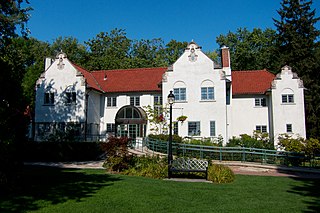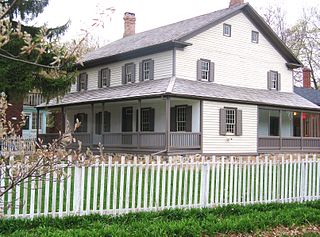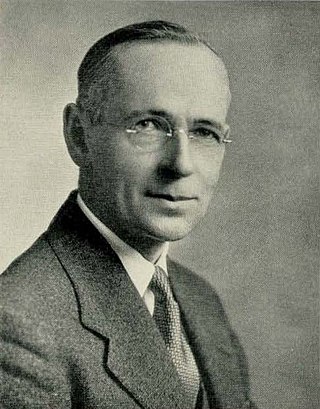| Cawthra House | |
|---|---|
| General information | |
| Coordinates | 43°38′57″N79°22′46″W / 43.64917°N 79.37944°W |
Cawthra House are the name for two of three homes associated with the Cawthra family in the Greater Toronto Area.
| Cawthra House | |
|---|---|
| General information | |
| Coordinates | 43°38′57″N79°22′46″W / 43.64917°N 79.37944°W |
Cawthra House are the name for two of three homes associated with the Cawthra family in the Greater Toronto Area.
The first Cawthra house was a mansion completed in 1853 for businessman William Cawthra by Joseph Sheard and William Irving. It is a now site of the Scotia Plaza office tower in Toronto.
The Toronto residence was one of several properties of influential Cawthra family in Toronto, became a branch of Molsons Bank in 1885, then as Sterling Bank from 1908 and finally as home to Canada Life Assurance Company from 1926 until 1929. [1]
Attempts to preserve the house failed and by 1949 it was demolished to make way for the Bank of Nova Scotia Building, now part of Scotia Plaza. [2]
The second house was built for John Cawthra (1789–1851) in 1830 as a home and retail store. It is still standing at 262 Main Street North in Newmarket, Ontario. [3]
Another Cawthra house exists on land once part of Joseph Cawthra’s land holdings is Cawthra-Elliot Estate in the Cawthra Park area in the City of Mississauga to the west.
The Cawthra-Elliot Estate is a Georgian Revivalist home built by W. L. Somerville for Grace Cawthra, daughter of Henry Cawthra and granddaughter of John Cawthra, in 1925-1926. [4] The estate lands were once part of Joseph Cawthra’s 200 acres Crown grant in 1808. [5] Following the death of Grace Cawthra-Elliot the home is now owned by the City of Mississauga.
Bricks from Joseph Cawthra House was repurposed for garden wall.

Caledon is a town in the Regional Municipality of Peel in the Greater Toronto Area of Ontario, Canada. The name comes from a shortened form of Caledonia, the Roman name for what is now Scotland. Caledon is primarily rural with a number of hamlets and small villages, but also contains the larger community of Bolton in its southeastern quadrant, adjacent to York Region. Some spillover urbanization also occurs in the south bordering the City of Brampton.

The Cawthra family of Toronto was famous for its business, social and cultural contributions to the city. It is one of the oldest families in Toronto, and many descendants of the family's founder, Joseph Cawthra, continue to play significant roles in Toronto society.

Scotia Plaza is a commercial skyscraper in the city of Toronto, Ontario, Canada. Originally built to serve as the global headquarters of Canadian bank Scotiabank, it is in the financial district of the downtown core bordered by Yonge Street on the east, King Street West on the south, Bay Street on the west, and Adelaide Street West on the north. At 275 m (902 ft), Scotia Plaza is Canada's third tallest skyscraper and the 52nd tallest building in North America. It is connected to the PATH network, and contains 190,000 m2 (2,045,143 sq ft) of office space on 68 floors and 40 retail stores.
Joseph Cawthra was a Canadian merchant and politician. Cawthra arrived in York, Upper Canada, from Yeadon, Yorkshire, England, in 1802. He was granted a 400 acres (162 ha) tract of land in Mississauga, Ontario by the Crown, provided he built a home on it within four years. The land remained in the hands of the Cawthra Family up until the 1970s, and much of it is now retained by the City of Mississauga as parkland.
William Cawthra was a philanthropist, business and civic leader and the eldest son of Joseph Cawthra. William, like his father, was associated with reformists and was considered anti-establishment, notwithstanding his wealth. William was elected to Toronto City Council as the Alderman for St. Lawrence Ward in 1836, a position his father held for one year until he was unseated in 1835 by conservative opposition.

Eastern Canada is generally considered to be the region of Canada south of Hudson Bay/Hudson Strait and east of Manitoba, consisting of the following provinces : Newfoundland and Labrador, Nova Scotia, Prince Edward Island, New Brunswick, Quebec and Ontario.

The Bank of New Brunswick, established in 1820, was the first Canadian bank to operate under a charter. The bank operated independently in New Brunswick and later in Prince Edward Island until it merged with the Bank of Nova Scotia in 1913.
Anthony Patrick Cawthra Adamson was a Canadian architect, author, teacher, and municipal politician. He was a descendant of Joseph Cawthra through his mother.

The Adamson Estate, which forms the eastern boundary of the Port Credit neighbourhood of Mississauga, Ontario, was purchased from the family of Agar Adamson by Credit Valley Conservation Authority in 1975 upon the urging of the local ratepayers group known as Project H21 after a proposed real estate development which would have changed the character of the neighbourhood. It is now a public park on the Waterfront Trail. It was recognized as a Historic Place in 1978.
Cawthra Park Secondary School, also known as CPSS, is a public high school built in 1972 located in Southeast Mississauga, Ontario, Canada. It is one of two regional arts schools in the Peel District School Board. Cawthra Park provides instruction to students from grades 9 to 12.

Fort Edward is a National Historic Site of Canada in Windsor, Nova Scotia, and was built during Father Le Loutre's War (1749-1755). The British built the fort to help prevent the Acadian Exodus from the region. The Fort is most famous for the role it played both in the Expulsion of the Acadians (1755) and in protecting Halifax, Nova Scotia from a land assault in the American Revolution. While much of Fort Edward has been destroyed, including the officers' quarters and barracks, the blockhouse that remains is the oldest extant in North America. A cairn was later added to the site.
Pointe-du-Lac is one of the six boroughs of the city of Trois-Rivières and a former municipality in Quebec, Canada on the St. Lawrence River. It was founded in 1738 and its current church dates from 1882. Another old building in the village is the Moulin Seigneurial built in 1765, one of the last watermills still in existence in Canada.

The Schneider Haus National Historic Site, formerly Joseph Schneider Haus, is a museum in Kitchener, Ontario, Canada. Situated on some of the earliest land to be settled by non-Indigenous peoples in what would become Waterloo County, the museum includes the oldest remaining dwelling in the area and was named a National Historic Site of Canada in 1999.

Brougham is a community within the northern part of the City of Pickering, in Durham Region of Ontario, Canada. Some of its lands are affected by plans to build the proposed Pickering Airport. There are concerns because some of its buildings are of architectural significance. There is one bus in the area; the 52 York University passes through with a stop at Brock Road. The population is about 150. The children go to school at Valley View Public School in its neighbouring town of Greenwood. It has slowly reduced in population and business as the 407 wound its way through in the early 2000s. It currently houses an Antique Restoration, Pickering Animal Shelter, Hot Tub Outlet and RV dealership, as well as a handful of historical buildings dating back to the Mackenzie Rebellion. There was a CC Gas Bar, which later became a Suny's Gas Bar near Brock Road and Highway 7. It was a high traffic gas bar, as most drivers traveling from Pickering to Toronto stopped there on their commute. In the past, the hamlet has been home for a Mac's Milk as well as a Family Run Hardware Store, a small restaurant as well as a small mechanic shop, most of which closed down in or around the time that the plans for the 407 development came to realization.
Otterville is a village in Norwich Township in Oxford County, Ontario, Canada. It is located on the Otter Creek with many historic features including Otterville Mill and Dam, Grand Trunk Station, African Methodist Episcopal Cemetery and a park.
John Cawthra (1789–1851) was a merchant, distiller and political figure in Upper Canada. He represented Simcoe from 1828 to 1830 in the Legislative Assembly of Upper Canada as a Reformer.

The Argyle Township Court House & Gaol is a provincially and federally recognised heritage building along Route 308 in the present-day community of Tusket, Nova Scotia. Predating Canadian Confederation, it played a significant role in the administrative, judicial, and political spheres of life in the Municipality of the District of Argyle during the 19th and early 20th centuries. Also known as the Tusket Court House, the building is held to be "the oldest surviving combined court house and jail in Canada." No longer an active court house, the local landmark now serves as a museum and tourist destination.

William Lyon Somerville was a Canadian architect practicing in Toronto, Ontario and Southern Ontario, Canada. He was president of the Ontario Association of Architects, and president of the Royal Architectural Institute of Canada. He was an accomplished architect who designed hospitals, commercial and institutional buildings, residential buildings. Somerville designed the original McMaster University buildings in Hamilton, Ontario, and the Rainbow Tower complex in Niagara Falls. He also designed several monuments, including the Clifton Gate Pioneer Memorial Arch in Niagara Falls and the Henley Bridge and Queen Elizabeth Way Monument for the new Queen Elizabeth Way superhighway built in the late 1930s and early 1940s.

William Irving was an architect in Toronto, Canada. His work included the original 1879 Dominion Bank headquarters building at One King West and British America Assurance Co. building (1877).